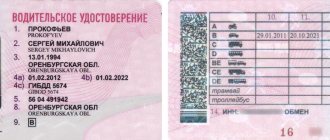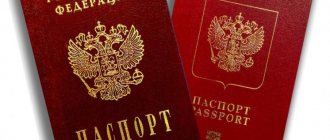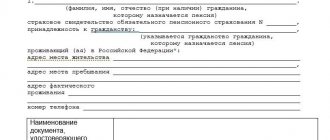In March 1995, the Schengen Agreement, signed back in 1985, came into force, according to which traveling around Europe has become much easier. The agreement provides for the conditions under which passport control in the states included in the Schengen zone was abolished. The agreement received this name in honor of the small village in which the document was signed.
Countries included in the Schengen area in 2021
All Schengen states in 2021, with the exception of three countries: Iceland, Switzerland and Norway, are members of the European Union. Bulgaria and Romania are states that are members of the EU and are just about to accept the Schengen Agreement, so passport control has not yet been abolished in them.
To enter one of the 26 countries that have signed the agreement, a Schengen visa is required. Based on this permit, you can freely visit any Schengen country.
However, there are some rules and restrictions on staying in the Schengen area. For example, it is better to enter another Schengen state through the country from which the visa was received.
Development
The Schengen zone was created to facilitate border crossing, because this procedure often requires a lot of time. Therefore, 5 countries decided to sign an agreement that regulated the abandonment of border controls. This agreement was originally concluded between the Kingdom of Belgium, Luxembourg, the Netherlands, France and Germany. In 1990, the Italian Republic joined, and in 1991, Schengen was replenished by the Kingdom of Spain and Scotland. On November 6, 1992, the Greek Republic entered the Schengen zone.
Table: order of entry of republics
| A country | date |
| Belgium | 19.05.1990 |
| Germany | 19.05.1990 |
| Luxembourg | 19.05.1990 |
| Netherlands | 19.05.1990 |
| France | 19.05.1990 |
| Italy | 17.11.1990 |
| Spain | 25.06.1991 |
| Portugal | 25.06.1991 |
| Greece | 6.11.1992 |
| Austria | 28.04.1995 |
| Denmark | 19.12.1996 |
| Sweden | 19.12.1996 |
| Iceland | 19.12.1996 |
| Norway | 19.12.1996 |
| Finland | 19.12.1996 |
| Hungary | 1.05.2004 |
| Poland | 1.05.2004 |
| Czech | 1.05.2004 |
| Slovakia | 1.05.2004 |
| Slovenia | 1.05.2004 |
| Latvia | 1.05.2004 |
| Lithuania | 1.05.2004 |
| Estonia | 1.05.2004 |
| Malta | 1.05.2004 |
| Liechtenstein | 28.02.2008 |
| Switzerland | 16.10.2008 |
Legislative measures in Austria
Austria is a member of the Schengen Agreement and must comply with everything that is prescribed in this agreement.
In this regard, the measures taken by the Austrian leadership are quite serious.
- Closing borders. In essence, this means that Austria is unilaterally withdrawing from the Schengen legislation with all the ensuing consequences
- There is no talk of introducing visas yet, but all citizens arriving in the country will be checked at the border. This may lead to the fact that some citizens whom border guards consider unreliable will not be allowed into the country
These actions are aimed at limiting the entry of unwanted persons, mainly from the Middle East and North Africa.
But these restrictions may also affect Europeans.
It is no secret that many immigrants from Eastern Europe choose Austria for their main place of residence, which the Austrians do not really like.
Former French President Nicolas Sarkozy (2007-2012) said that the current situation in the EU countries can be compared to a sewerage burst. There is a lot of truth in this. Information that refugees in Germany raped a 13-year-old girl from a family of Russian migrants led to serious unrest among the Russian diaspora.
Most likely, problems related to refugees will not remain without consequences for the Federal Chancellor. The situation is no better in other EU countries - in France, Great Britain and others.
The European Commission has already approved the idea of creating a supranational border service, which will have its own border guard units.
However, control over the external perimeter of the EU border - certainly a necessary and effective measure - does not solve the problem of migrants.
“The issue of illegal migration consists not only of the problem of illegal crossing of European borders, but also of the unpreparedness of the European social system, legislation, law enforcement structures for such a turn, and the absence of an effective deportation system.
For comparison, the EU is inhabited by about 500 million people and the number of migrants arriving per year is about half a million. And in the USA, with a population of 325 million people, 700-800 thousand illegal migrants arrive annually, of which about 400 thousand people are deported back annually.
So, perhaps, the issue can only be resolved in a comprehensive way,” says Dmitry Ofitserov-Belsky, a specialist in European politics and associate professor at the National Research University Higher School of Economics.
Since January 2021, the Austrian government has amended the legislation to tighten conditions for refugees. In particular, this is the establishment of a quota for the reception of migrants and the issuance of temporary refugee status for a period of three years. (2016-2019)
Where else can you enter with a Schengen visa in Europe?
It is worth immediately noting that the concepts of the EU and Schengen are different and should not be confused. The Schengen zone was created to facilitate travel between European countries. Today it includes 26 republics, which Russians can visit with a pre-issued visa.
Taking into account the operation of the European Economic Area, four more states practice the Schengen regime for crossing their territory. Although they did not officially sign the agreement:
- Bulgaria;
- Romania;
- Cyprus.
- Croatia.
In 2021, you can visit them with a Schengen visa issued in any country or apply for a national entry permit. However, the presence of a local visa, no matter in which country from the specified list it is issued, does not give the tourist the right to visit Schengen countries.
For reference. It is possible to enter the territory of any of these four applicant states on an internal visa. For example, with a Cyprus visa you can visit Croatia, Romania or Bulgaria.
Countries awaiting accession to Schengen are marked in blue
Subscribe to the Visaasam.ru channel in Yandex Zen
Dwarf states: San Marino, Vatican City and Andorra can also be visited with Schengen visas. Their diplomatic missions do not issue Schengen visas on their own. San Marino and the Vatican can only be reached from Italy, and Andorra from Spain.
The above candidate countries have not yet become members of the Schengen Agreement for various reasons. The fact is that in order to join, states must meet a number of requirements that the republics have not yet fulfilled. One of the main requirements is to ensure strict control.
EU countries that are not part of Schengen apply their own migration policies, for example, Great Britain and Ireland.
Great Britain and Ireland are preparing to leave the Eurozone. However, in 2021, the United Kingdom is still part of it, but you cannot enter its territory with a Schengen visa. Visitors will need to apply for a UK national visa.
Larnaca International Airport, Cyprus. Russians can enter this country with a national visa.
Schengen area
Many travelers are interested in which countries the Schengen visa applies to. After all, if you are planning a long trip around Europe, you should find out which countries are included in Schengen and which require a national visa.
It is worth considering that countries included in Schengen are not necessarily members of the European Union (Iceland, Liechtenstein, Norway and Switzerland are not members of the EU). In turn, Ireland and Great Britain signed the Schengen agreement and are members of the EU, but retained passport control. That is, to visit them, tourists need a separate document - a national visa.
Very soon, the single visa-free space may expand; other EU members have been striving to join it for several years now: Bulgaria, Croatia, Romania, Cyprus. The exact date of signing the agreement and the entry of new participants has not been announced. Currently, entry into these countries is open with a Schengen visa, but internal national visas are also valid. At the same time, the validity zone of an internal visa for southern Cyprus may extend to Bulgaria, Croatia, and Romania.
Unions of the EU and Schengen
Due to the fact that many republics want to join the Schengen zone, it was decided to sign the Amsterdam Treaty in 1999, which regulated that from the date of signing all the rules of the Schengen agreements become part of the current legislation of Europe.
European states that are not part of the Schengen area
Russians do not need a visa for some of them in 2021:
- Great Britain (applying for a British visa takes a fair amount of time and requires collecting all the necessary documents),
- Ireland (national visa required),
- Israel (you can enter with a foreign passport for 90 days),
- Türkiye (90 days you can stay without a visa),
- Cyprus (you can travel with a Schengen visa, or you can get a free electronic entry permit for 90 days),
- Romania (national visa is issued),
- Ukraine (a foreign passport and invitation are required, you can stay in the country for 90 days),
- Belarus (you can enter with a national Russian passport, the time spent in the country is not limited),
- Moldova (you only need a foreign passport, the permitted visa-free period of stay is 90 days),
- Russia,
- Albania (a visa is not required during the summer tourist period, each year the exact dates are determined individually. In 2021, the “visa-free” is valid from April 1 to October 31),
- Bosnia and Herzegovina (no visa required for travel up to 30 days),
- Macedonia (visa-free regime is valid until March 15, 2021. It is expected that the visa-free regime will be extended until next year),
- Serbia (a foreign passport is required, which allows you to stay on the territory of the state for 30 days),
- Georgia (you can stay in the country for 365 days without a visa),
- Kazakhstan (no visa required, time for stay in the country is unlimited),
- Azerbaijan (90 days you can enjoy the beauty of this state without a visa),
- Bulgaria (you can enter with a Schengen visa or apply for a national one),
- Montenegro (visa-free regime is valid for 30 days).
The beauty of Montenegro.
Which countries are included in the Schengen area in 2021
The list of countries included in the Schengen area in 2021 is as follows:
- Austria
- Belgium
- Hungary
- Germany. It has the largest population, with almost 82 million people living here. The territory of Büsingen am Hochrhein is not included in the Schengen zone.
- Greece (except Athos)
- Denmark (with the exception of two autonomous regions - Greenland, Faroe)
- Iceland
- Spain (without Melilla, Ceuta)
- Italy (except Levigno enclave)
- Latvia
- Lithuania
- Principality of Liechtenstein. The Principality is the smallest Schengen state, its area is only 160 km²
- Luxembourg
- Malta
- Kingdom of the Netherlands (except for the Caribbean Netherlands, Sint Maarten, Curacao, Aruba)
- Norway (except Bear Islands, Spitsbergen)
- Poland
- Portugal
- Slovakia
- Slovenia
- Finland
- France (without overseas possessions). It is the largest Schengen state in terms of length, with an area of 674,843 km². Joined the agreement in 1985
- Czech
- Switzerland
- Sweden
- Estonia
If you are interested in which countries require a Schengen visa, you should note that in addition to the above list of countries, you can also visit some other countries with a Schengen visa . San Marino, Vatican City, the Principalities of Monaco and Andorra, which have not signed the Schengen Agreement, are also covered by the Schengen zone. However, if you have a single-entry Schengen visa after visiting, for example, Andorra, certain difficulties may arise. The fact is that Andorra is not part of the Schengen Union. That is, when entering the principality, a person actually leaves the territory of the union, upon returning to which he needs a second visa.
Features of travel between Schengen countries
According to the rules, some republics have introduced border controls. This happened due to the mass emigration of refugees from Syria, as well as from Ukraine, where fighting is currently underway. Control was established in Austria by the Hungarian and Slovenian Republics. Germany has established additional posts on the border with the Republic of Austria. Denmark has introduced a border regime on the border with the Federal Republic of Germany. In Sweden, a special post is installed only on the Oresun Bridge, and in Norway in all seaports.
The establishment of border controls does not change the fact that travelers have the right to visa-free entry into all Schengen countries. These are simply additional security measures to control the length of stay of foreign residents.
Border controls in France
In what cases is it necessary to apply for a visa?
In some cases, you will not be able to get by without a visa. This applies to all long trips lasting more than 30 days. It doesn’t matter what the purpose of coming to the country is – study or work, a long tour around the country or meeting with relatives. In any case, you will need to obtain a visa for a long stay in the country. Whatever the purpose of the trip, the permit document is issued in a uniform format.
Obtaining a visa is required if the purpose of travel to Serbia is to work, study or do business.
The visa is issued for a year. During this period, you are allowed to stay in the country for no more than 90 days.
Where to contact
To obtain a visa, you must submit an application and documents for consideration to the consular office of the Serbian embassy. It is located in Moscow at st. Mosfilmovskaya, 46. Visa documents are accepted on Monday, Tuesday, Thursday and Friday. It takes 4-6 business days to process your application.
Documentation
Before coming to the Embassy to submit an application, you must prepare documents. To obtain a visa you will need:
- A questionnaire of a certain sample. Information must be recorded in Serbian or English. It is allowed to fill out the form in Russian.
- 2 color photographs. The size of the photographs is standard - 3.5x4.5 cm. The photograph must be taken from the front, against a light, preferably white, background. There should be no foreign objects or persons in the photo. The face must be open. Hats and glasses are permitted only for religious or medical reasons. The photograph must be clear and contrasting, printed on high-quality photographic paper.
- A foreign passport that expires no earlier than 3 months after the end of the trip.
- A copy of the completed pages of the internal passport.
- Medical insurance with a minimum coverage amount of 20 thousand euros.
- Round trip tickets or their reservation.
- Documents confirming the financial solvency of the applicant. The tourist must have at least 50 euros for accommodation per day.
- Social guarantees: for workers - a certificate from the employer confirming the retention of the job during the travel period; for students - a certificate from the university; for pensioners - pension certificate.
Depending on the purpose of the trip, you will need to provide other documents. If you are planning a long tour around the country or just a vacation at one of the resorts, you must provide a travel voucher, rental agreement or hotel reservation for the entire duration of your stay. Those who are going to visit relatives or friends will need to receive an invitation from the host party. For a business trip, you must provide the visa officer with an official invitation from a Serbian company. For those who want to study at local universities, they will need to take an invitation to study or provide an agreement on the provision of educational services.
Sometimes a medical certificate confirming the absence of dangerous diseases and vaccination may be required.
Cost and production time
To obtain a visa, you will need to pay a consular fee, which will amount to 40 euros for those visiting the country for tourism purposes or going on a visit; 110 euros – for those who come to Serbia to work, study or do business.
After submitting documents to the Embassy, it takes on average 5-7 working days to review them. There are times when visa issuance is delayed. The reason may be that the visa officer has questions or the need to clarify certain information. The wait may last for a month. Therefore, it is better to apply for a visa in advance.
Categories of visas for entry into Schengen
To ensure the procedure for visiting European countries by foreign citizens, the migration legislation of the Old World suggests that visitors purchase entry visas in accordance with the purposes of the visit. Each category has a specific designation:
Decoding the symbols on a Schengen visa
- A - transit permit, allowing you to stay within the Schengen area of the airport with the intention of proceeding to a third country.
- B - short-term visa, which allows you to cross Schengen once or twice when traveling to third countries, if the travel duration is no more than five days.
- C is the most common visa type for tourists, allowing them to cross Schengen border controls multiple times within a 90-day six-month period.
- D is a national visa that allows you to stay in the Schengen state for up to one year.
- FTD (UTD) and FRTD (UTD-ZhD) - provided to Russians traveling from the Russian Federation to Kaliningrad and back.
- LTV - visa for emergency short-term entry/exit/transit into a limited territory of a Schengen state.
According to the general migration policy, the rules for obtaining a visa at any consulate of a European country are the same. There may be minor differences, for example, clarification of the purpose of entry into the state. But it is necessary to prepare documents at the representative office of the country where you are planning a trip or transit entry from the Russian Federation.
Helpful information! You should not apply for a visa, for example, to Finland (because the consulate is close), but spend most of your time in Sweden or Germany. This is not welcomed by the European side and can cause trouble in the form of personal sanctions.
Types of Schengen visa
A Schengen visa, issued by any of the Schengen member states, allows its holders to travel freely and cross the internal borders of any Schengen country. It also grants the right to enter all EFTA Schengen countries.
Member countries of the European Union that are not members of the Schengen countries also grant visa-free entry to third-country nationals if they have a valid Schengen visa and the non-Schengen country has a visa waiver agreement with that country (see information higher in the country).
There are 3 types of Schengen visas:
UNIFORM SCHENGEN VISA (USV)
A single Schengen visa is a permit issued by one of the member countries of the Schengen area for residence in a Schengen country for up to 90 consecutive days, every 3 months.
USV can be used as a transit visa.
There are three subcategories of the Unified Schengen Visa:
- Single Entry: A unified visa allows its holder to enter the Schengen area once for a limited period of time; the visa expires automatically after leaving the country.
- Double-entry visa: similar to a single-entry visa, except that its holder can enter a Schengen member state twice; after the second border crossing, the visa expires automatically.
- Multiple entry: the holder of this visa can cross the Schengen zone as many times as necessary during the validity period of the visa. But stay in the Schengen country is limited to 90 consecutive days within 6 months.
Limited Territorial Visa (LTV)
LVV holders can only enter the Schengen member country that issued the visa. You cannot visit other Schengen countries unless you have received permission to do so during the visa process.
National visa
Issued to those who will undergo training, work or permanently reside in the territory of the Schengen countries.










